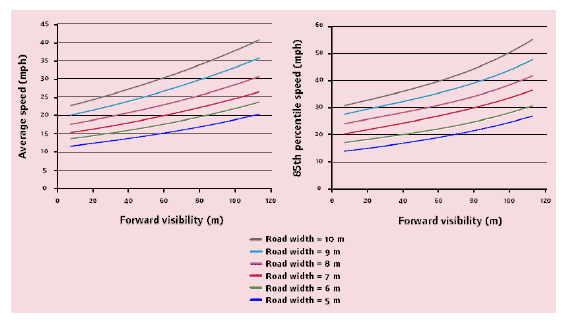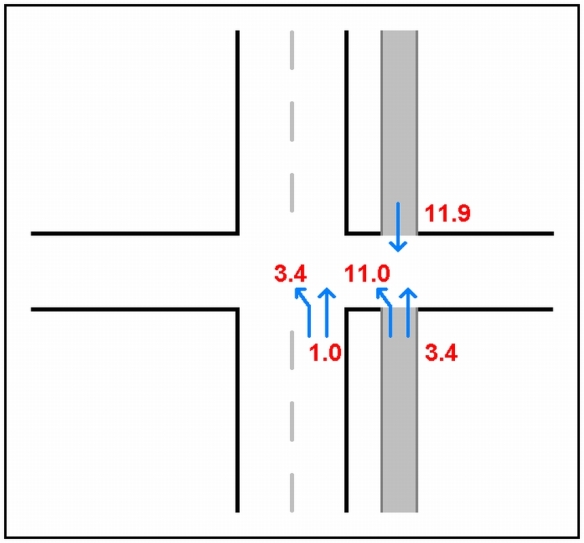Shit can happen to any of us… although urban and traffic planners usually keep in mind the following correlation between fatality risk and speed of passanger cars.
• 8% of those struck by a vehicle travelling at 30km/h will be killed
• 45% of those struck by a vehicle travelling at 50km/h will be killed
• 90% of those struck by a vehicle travelling at 60km/h will be killed.
SWOV Fact sheet – The relation between speed and crashes PDF!
Next figure shows the correlation between visibility and carriageway width and vehicle speeds (a) average speeds and (b) 85th percentile speeds. These graphs can be used to give an indication of the speed at which traffic will travel for a given carriageway width/forward visibility combination. Indeed, reducing the cross-section of a traffic lane will do actually slow down the average speed.
source: http://www.scotland.gov.uk/Publications/2009/01/27140909/8
Several studies (e.g. Salusjärvi, 1981; Nilsson, 1981, 1988; Johnson, Klein, Levy & Maxwell, 1981; Christensen, 1981) show that reductions in average driving speed of 2 to 5 km/h can result in a reduction in injury and fatal accidents of up to 30%. This you can understand when having a look at the next figure what represents the individual’s risk curve.
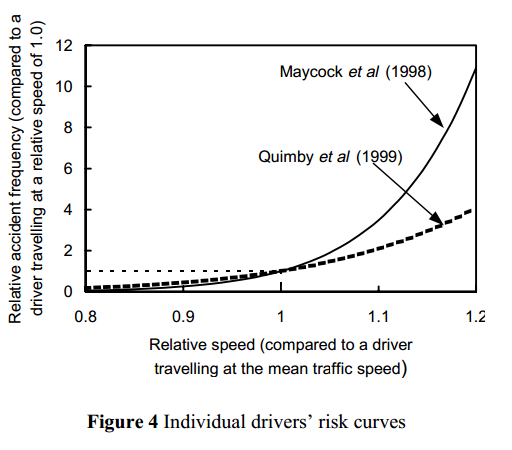
There are clear and obvious benefits of slowing traffic on residential streets, primarily the improvement of pedestrian and bicyclist safety. Slower traffic reduces the severity of accidents, reduces noise, and generally improves the livability of residential streets. Figure 1 shows the relationship between vehicle speed and stopping distance, and pedestrian and bicycle accident severity.
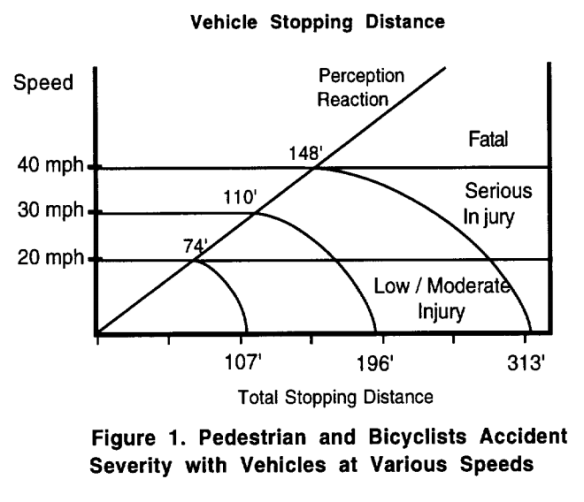
When considering narrowing residential streets as a traffic calming measure, it is reasonable to ask the following questions:
● Is street narrowing alone an effective calming measure?
● How narrow must the street be to dramatically reduce speeds?
● What other factors affect residential street speed, and what is their relationship?
Also keep in mind that cyclists need special attention when planning the main cycling network in a city. It must be pointed out that on a one-side bidirectional cycle path is not safer than on-street facilities! This figure from Lund shows the relative risk multiplicators when cycling paralell to main roads. The basis is when riding on the pavement (1.0) and it is easy to see why separated contra-flow is so dangerous (11.9)
This is why most planners agree to mix up different traffic modes (mopeds, cars, bicycles) before most traffic junctions. Here’s a figure from an American design guideline that shows the typical automobile and bicycle trajectories. Consider that turning left by bike in heavy traffic junctions is much safer when done indirectly!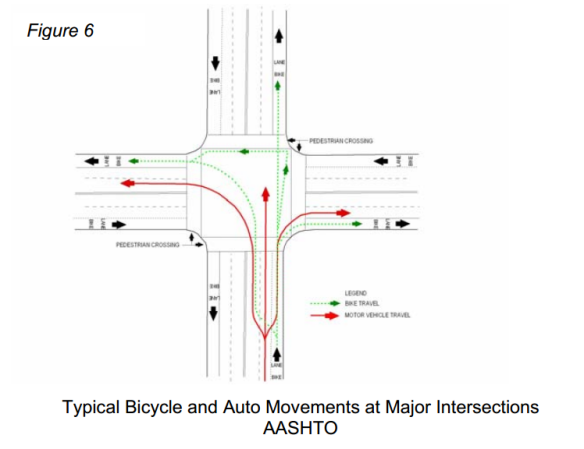
The effects of drivers’ speed on the frequency of road accidents…


